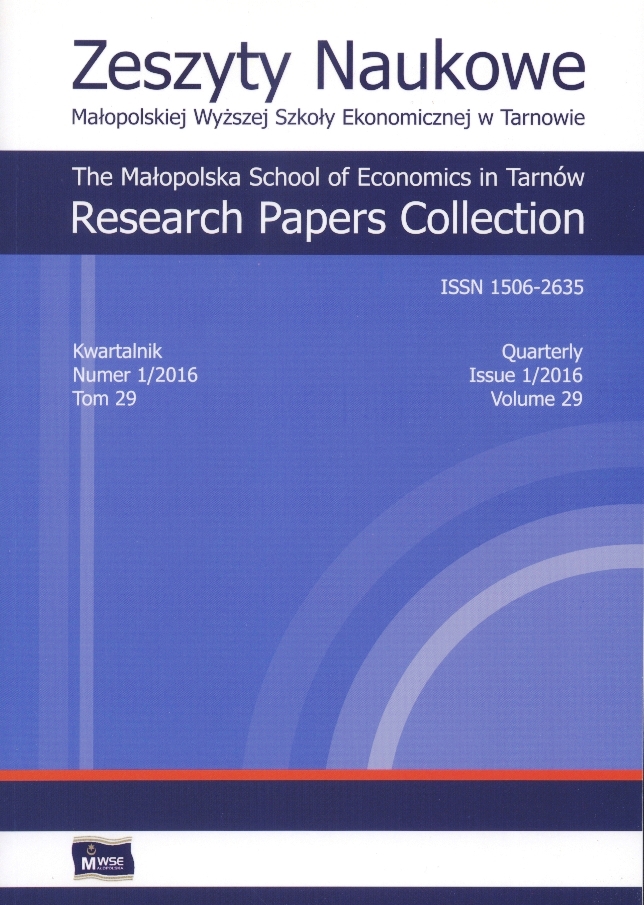Abstract
A standard method for repetitive task workload evaluation is OCRA (Occupational Repetitive Action), recommended for use in PN-EN 1005-5: 2007 standard. However, the problem with proper assessment occurs, if the same employee performs a variety of different repetitive work tasks during a single workday. In this situation, the results of the assessment of the workload by OCRA or other methods of the upper limbs workload evaluation (RULA, JSI) are unreliable. To evaluate the workload in this case, the Assessment of Repetitive Tasks of the Upper Limbs method (ART) was applied. The method is recommended for use by the British Health and Safety Executive (HSE). The ART method evaluates the repetitive tasks performed by the upper limbs, including a variety of activities making up the workload. The usefulness of ART method for detecting and assessing the risk associated with repetitive tasks as well as static workload is shown in the article.
References
Eurofound. (2010). Europejskie badanie warunków pracy – prezentacja wyników [online, dostęp: 2015-12-10]. European Foundation for the Improvement of Living and Working Conditions. Dostępny w Internecie: http://old.eurofound.europa.eu/surveys/smt/ewcs/results_pl.htm.
View in Google Scholar
Górska, E. (2002). Ergonomia. Projektowanie, diagnoza, eksperymenty. Warszawa: Oficyna Wydawnicza Politechniki Warszawskiej. ISBN 8372072906.
View in Google Scholar
HSE. (2010). Assessment of repetitive tasks of the upper limbs (the ART tool). Guidance for health and safety practitioners, consultants, ergonomists and large organisations [online, dostęp: 2015-04-10]. Health and Safety Executive. Dostępny w Internecie: http://www.hse.gov.uk/pubns/indg438.pdf.
View in Google Scholar
ISO/DIS 10075-1. (2015). Ergonomic principles related to mental work-load – Part 1: General concepts, terms and definitions.
View in Google Scholar
Jóźwiak, Z.W. (2011). Podstawowe zasady opracowywania programów profilaktycznych mających na celu przeciwdziałanie dolegliwościom ze strony układu ruchu w zakresie dostosowania stanowisk pracy. W: P. Krawczyk-Szulc, E. Wągrowska-Koski (red.). Jak zapobiegać chorobom układu ruchu i obwodowego układu nerwowego wywołanym sposobem wykonywania pracy. Łódź: Oficyna Wydawnicza Instytutu Medycyny Pracy im. prof. J. Nofera. ISBN 9788363253028.
View in Google Scholar
Kodeks pracy. (1974). Ustawa z dn. 26.06.1974 r. Tekst jedn. Dz.U. z 2014 r. poz. 1502 z późn. zm.
View in Google Scholar
Konarska, M. (2003). Monotonia jako czynnik obciążenia zawodowego. Bezpieczeństwo Pracy, 3, 13–16.
View in Google Scholar
Moore, J.S., Garg, A. (1995). The Strain Index: a proposed method to analyze jobs for risk of distal upper extremity disorders. American Industrial Hygiene Journal, 56, 443–458.
View in Google Scholar
Petreanu, V., Seracin, A.-M. (2012). Risk factors for musculoskeletal disorders development: hand-arm tasks, repetitive work [online, dostęp: 2015-12-15]. Dostępny w Internecie: https://oshwiki.eu/wiki/Risk_factors_for_musculoskeletal_disorders_development:_hand-arm_tasks,_repetitive_work.
View in Google Scholar
PN-EN 1005-5. (2007). Bezpieczeństwo maszyn – Możliwości fizyczne człowieka – Część 5: Ocena ryzyka dotycząca czynności wykonywanych z dużą częstością powtórzeń. Warszawa: Polski Komitet Normalizacyjny. ISBN 9788325129019.
View in Google Scholar
Roman-Liu, D. (1996). Obciążenie układu mięśniowo-szkieletowego na stanowisku pracy. Bezpieczeństwo Pracy, 11, 2–5.
View in Google Scholar
Roman-Liu, D. (2007). OCRA – metoda oceny ryzyka związanego z pracą powtarzalną. Bezpieczeństwo Pracy, 7–8, 28–31.
View in Google Scholar
WE. (2003). Dyrektywa 2003/88/WE Parlamentu Europejskiego i Rady z dnia 4 listopada 2003 r. dotycząca niektórych aspektów organizacji czasu pracy [online, dostęp: 2016-02-17]. Dostępny w Internecie: http://eur-lex.europa.eu/legal-content/PL/TXT/PDF/?uri=CELEX:32003L0088&from=PL.
View in Google Scholar
Wykowska, M. (2009). Ergonomia jako nauka stosowana. Kraków: AGH Uczelniane Wydawnictwa Naukowo-Dydaktyczne. ISBN 9788374641470.
View in Google Scholar
© Copyright by Małopolska School of Economics in Tarnów. The articles are available under the Creative Commons Attribution NonCommercial-NoDerivatives 4.0 International License


